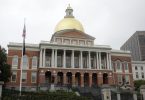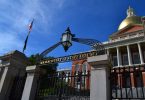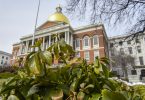By Yukun Zhang
Boston University Statehouse Program
This article was originally published in The Berkshire Eagle.
BOSTON — The state has an extra $1 billion to spend from fiscal year 2018, and Berkshire County’s senator and representatives think the money should be used for disaster relief, education and a rainy day fund.
“We had a natural disaster in the town of Adams requiring $1 million — a burden for a small town,” said state Sen. Adams Hinds, D-Pittsfield, referring to the September flood in the Lime Street neighborhood.
Another area to spend the money, Hinds said, is updating the foundation budget for schools established by the 1993 education reform law. A bill that would have reformed the state foundation budget and provided more funding to schools, co-sponsored by Hinds, didn’t pass when the state House and Senate couldn’t reach an agreement.
Rep. John Barrett III, D-North Adams, who toured the flooded community in Adams with Hinds, said he and Hinds are requesting $1.9 million to cover the damage.
Barrett also mentioned the failed education funding bill.
“Two of the communities in my district — Adams and North Adams — have been hard hit by loss of Chapter 70 [education aid] money, and they certainly can use some of the funding,” he said.
Rep. Tricia Farley-Bouvier, D-Pittsfield, said the money could be used to fund overdue state contracts. State workers have been negotiating for new contracts with the governor’s office, she said, but the lack of funding left her constituents concerned.
Farley-Bouvier also would like to see the extra revenue returned to municipalities to increase education and transportation funding, “things that are going to make a difference for the individual taxpayer.”
“Of course it’s important to keep putting money aside in our stabilization fund, our rainy day fund,” Farley-Bouvier said. The increase in the rainy day fund, Farley-Bouvier said, keeps the bond rating high, which will save taxpayers money because they will pay less interest.
Rep. William “Smitty” Pignatelli, D-Lenox, prioritizes the rainy day fund and said it’s “premature” to spend the cash.
“Just because we appear to have a surplus doesn’t mean that we should spend it,” he said.
Pignatelli said state government should be cautious and have a bigger reserve.
“We had a very healthy reserve in the early 2000s, when the first recession hit,” he said, “and I’m the only member of the Berkshires from that time who is still in office.”





